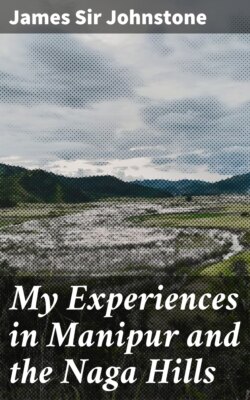Читать книгу My Experiences in Manipur and the Naga Hills - Sir James Johnstone - Страница 8
На сайте Литреса книга снята с продажи.
Cacharees.
ОглавлениеTable of Contents
Their origin is obscure. They are first met with in the north-east portion of the Assam Valley between the Muttuk country and Sudya. Round the last in the vast forests, there are numerous ruins ascribed by the people to the Cacharee Rajahs, built of substantial brickwork. I have not seen any sculptured stonework, but it may exist. The traditions give no clue to their original home, which was probably in Thibet. From the neighbourhood of Sudya they penetrated down the valley, leaving buildings and remnants of their tribes here and there, notably in the Durrung district. The main body were, for a time settled in the neighbourhood of Dimapur, and the country lying between it and Doboka, the Cachar district, but when they arrived or how long they stayed we have no means of ascertaining. They occupied the first two or three ranges of the Burrails and stoutly contested possession with the Naga invaders, and after they had been dispossessed made a gallant attempt to retrieve their affairs by an attack on Sephema. They entered the hills by the Diphoo gorge and constructed a paved road up to the neighbourhood of Sephema where they would probably have succeeded in their operations, but that the Sephema Nagas, skilful then as now, in the use of poison, poisoned the waters and destroyed a large portion of the invaders; the rest retreated to Dimapur, and eventually left the neighbourhood and settled in Cachar, to which they gave their name. There are still a good many Cacharees on the banks of the Kopiti, in the neighbourhood of Mohung-dee-jood. They are a fine hardy race, and in my time the Naga Hills police was largely recruited from them. Under Captain Butler they did good service, and would have gone anywhere when led by him.1 The Cacharees were governed formerly by a race of despotic chiefs.
